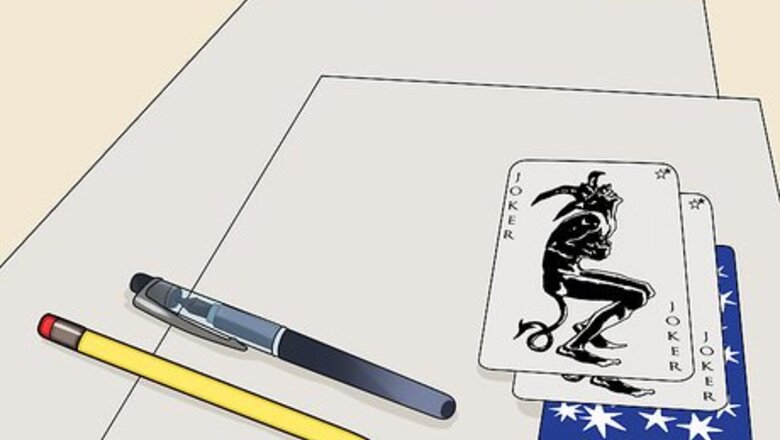
views
Setting Up
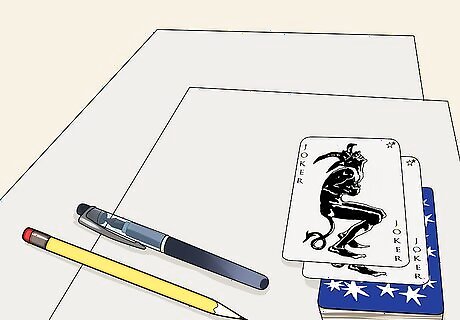
Gather materials. In order to play Rummy 500, you are going to need a few simple materials. You will also need 2 to 8 players (including yourself). Gather your friends, plus a 52 card (standard) deck of cards (and two Jokers optional), a pen or pencil, and some paper.
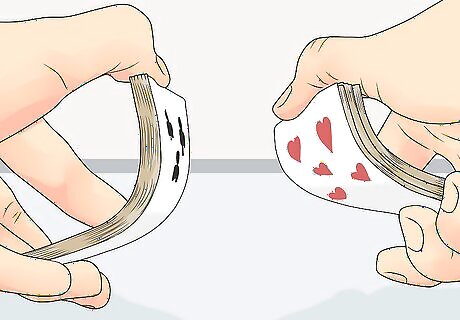
Shuffle your cards. “Shuffling” is just a fancy way to say “mixing up the cards.” The most effective shuffling method is known as the “riffle shuffle,” but you can try any method that works for you. Chances are that at least one person you’re playing with is good at shuffling. Try the “riffle shuffle” by dividing the deck in half, bending each half in each of your hands, and “riffling” the two halves together. You may also try an “overhand shuffle” or a “Hindu shuffle.”
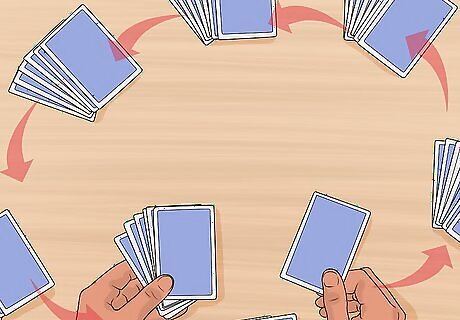
Deal the cards. Start by selecting one player to be the dealer for the first round. The first round will begin with the person to the left of the dealer. During the next round, the player who went first will deal, and the person to the left of them will begin. The dealer will deal the cards by placing one card face down in front of each player, moving clockwise until the right number of cards have been distributed to each person. The dealer always deals to their self last. In a game with 3 or more players, each player will receive 7 cards. In a game with only 2 players, each player will receive 13 cards.
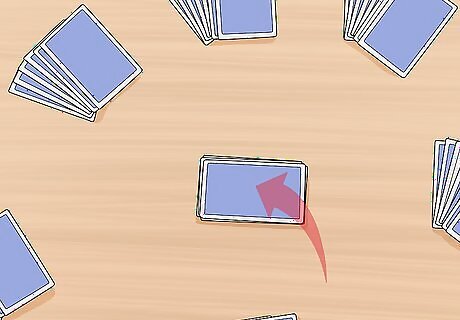
Create a “stockpile." The remaining cards will be placed in a pile in the center of the table. This is called the “stockpile” because it is where players will draw cards at the beginning of each turn. Be sure to position the stockpile in a place where all players can reach it. This is sometimes called a “draw pile.”
Understanding the Objectives
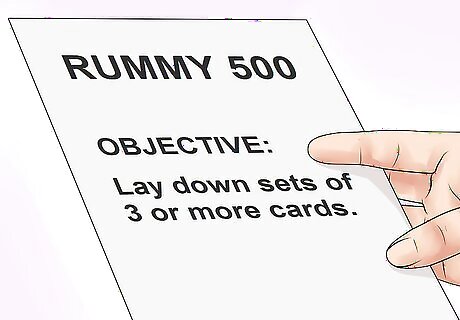
Learn the objective. The objective of Rummy 500 is to lay down sets of 3 of more cards. These can be matched sets of 3-4 cards (such as Queens, 5s, 2s, etc.), and/or sequences of 3 or more cards in the same suit (such as the 4, 5, and 6 of spades). The round is finished when one player uses all of their cards or the stockpile runs out. All points are then tallied. These groups of 3 or more cards are called “melds.” Additionally, players can lay down 1-2 cards that match with existing melds on the table. (For example, if one player has a meld of 3 Aces, another player can lay down the fourth Ace.) Jokers are used as wildcards and can represent any card a player wants.
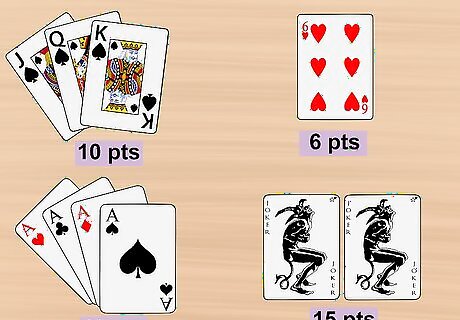
Understand card values. Cards have values. Number cards have a value equal to the number on the card. Face cards (such as Jacks, Queens, and Kings) are each 10 points. Aces are worth 15 points. Jokers - when used - are 15 points each. There are places where some say number cards are worth five points each, but that's not common and is only done to simplify scoring. Whenever cards are laid down into a meld in these patterns, they accrue points. To win Rummy 500, one player must reach 500 points, over multiple rounds of play.
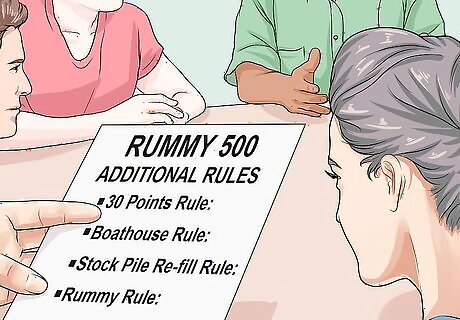
Learning additional rules. There are some additional, optional rules that you may like to use. Be sure to discuss these rules and accept or reject them before you begin gameplay. 30 points rule: This rule states that players must earn at least 30 points in one round before they are able to add points to their overall score. Once players are on “on the board,” any point value can count. Boathouse rule: This rule states that players must discard on every turn, including the one in which they “go out.” Stock pile re-fill rule: In standard Rummy 500, when the stockpile runs out of cards, the round ends. However, some players instead choose to reshuffle the stockpile and continue playing until one player goes out. Rummy rule: This rule states that any time a player discards a card that could meld with an existing set on the table, the first player to call out “Rummy” gets to take that card and lay it in front of them (earning that card’s score).
Prepare the discard pile. Before each round of Rummy, always turn over one card to begin your stockpile.
Playing the Game
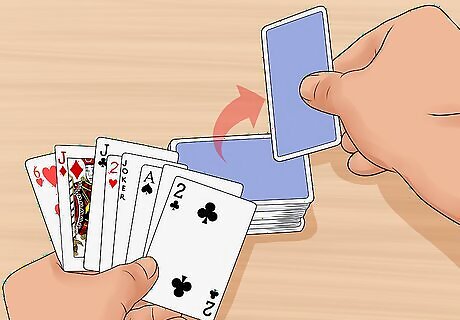
Draw a card from the “stockpile.” Begin each round with the player to the left of the dealer, and continue to play clockwise. Each player’s turn begins by them picking up the top card from the stockpile and placing it in their hand.
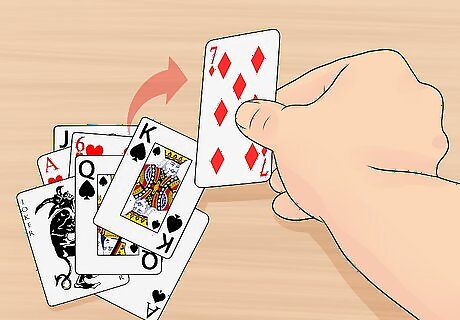
Draw a card from the discard pile. Another option is for a player to pick up a card from the discard pile. The discard pile should be spread out so that each card is visible. Rather than choosing a face-down card from the stockpile, a player may select a card that they can use from the discard pile. Players can't draw a card from the stock pile and a set of cards from the discard pile. But there are a few rules when drawing a card from the discard pile: The player must pick up all cards on top of the card they want. The player must be able to create at least one meld between the cards they picked up and their own cards previous to that drawing during that turn. The remaining cards may either be melded during that turn or added to the player’s hand.
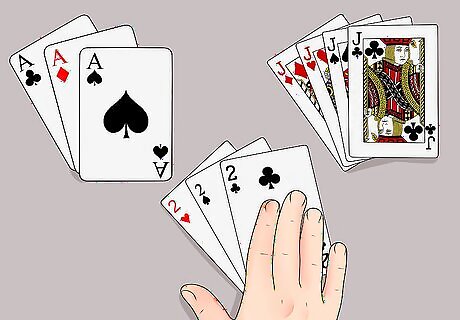
Lay down any “melds.” After a player picks up a card (or cards), they can lay down any melds from their hand. This includes 3-4 matching cards, such as 3 Aces, 4 Jacks, or 3 2s. This also includes 3 or more sequential cards of the same suit, such as the 10, Jack, and Queen of hearts. Finally, this can include additions to any meld already on the table. For instance, if 3 10s are already melded on the table, a player possessing the 4th 10 could lay it down during their turn. Melds can't go "around a corner" meaning, you can't meld something past the ace (2, 3, 4) if you create a meld using cards before the Ace (starting at kings, queens, jacks, etc.)
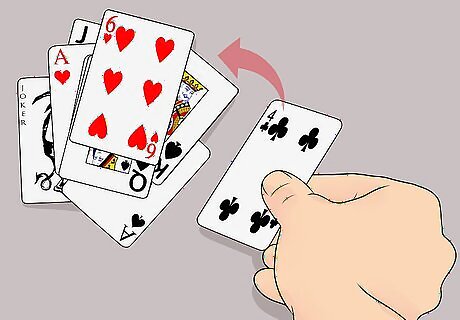
Discard. Each player’s turn ends when they place one card down on the discard pile. Even if the card could've completed a meld on top of a meld of three cards or if it's the last card, one card must get discarded, but all melds must be completed before this is done. Once a discard is placed, play moves on to the next player. A discard cannot be taken back.
Learn additional maneuvers other players can make. If players have upcoming cards to meld into the currently-placed melds from another player, they may meld these down into their own area where their cards are scored. Sometimes, players mention why they are placing down certain cards, but these add-on melds must be made only on the players' turn.
Realize how the round ends. If the stock pile runs out of cards or one player has placed down all melds and their discarded cards into the discard pile, play ends.
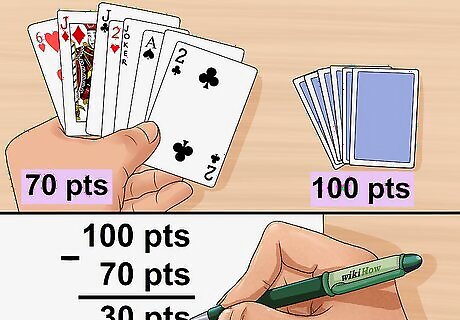
Scoring the game. When one player uses all of their cards, the round ends, and points are tallied up. Players who still have cards in their hands tally the value of those cards and then subtract that amount from their score for that round. Alternatively, if the stockpile runs out of cards, the round ends, but players do not subtract the value of their hands. For example, if the value of a player's hand equals 70 points, and the value of what they have laid down equals 100 points, they will earn 30 points for that round. If a player loses more points from their hand than they have earned in the round, the negative value will be subtracted from their overall score.
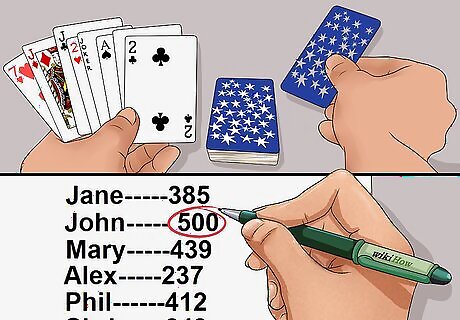
Keep playing until one player reaches 500 points. After each round, the scores are tallied and written down. Continue playing rounds in this fashion until one player reaches 500. If more than one player surpasses 500 during the same round, the player with the highest score wins.




















Comments
0 comment